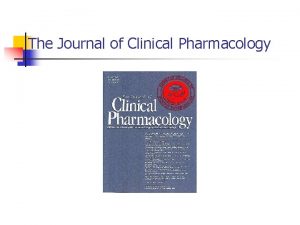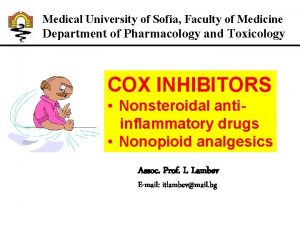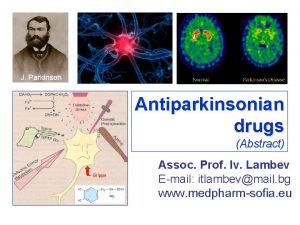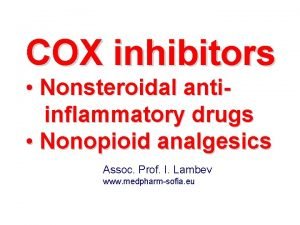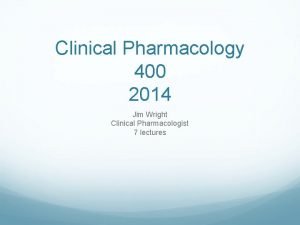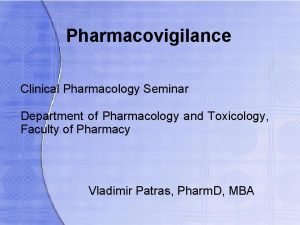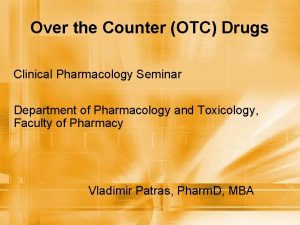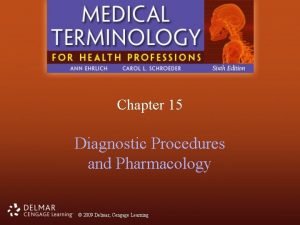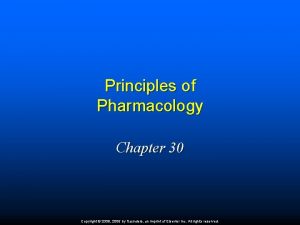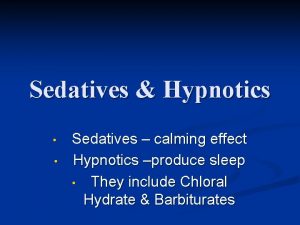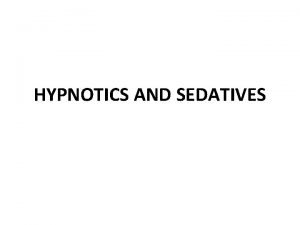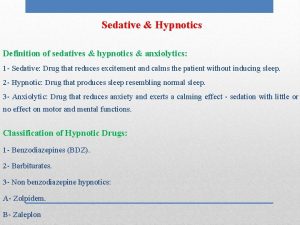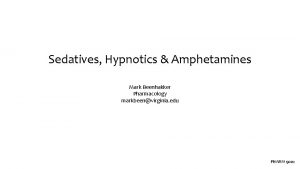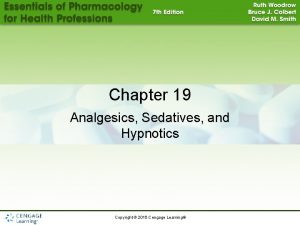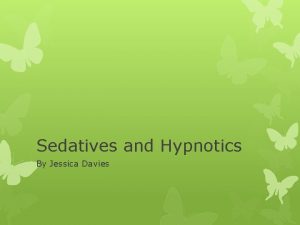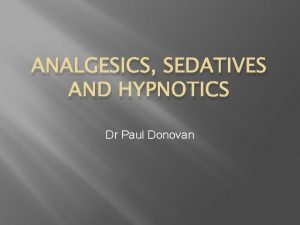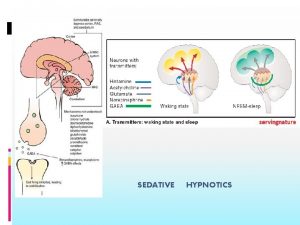Introductory Clinical Pharmacology Chapter 23 Sedatives and Hypnotics









- Slides: 9

Introductory Clinical Pharmacology Chapter 23 Sedatives and Hypnotics Copyright © 2008 Lippincott Williams & Wilkins.

Introduction to Sedatives and Hypnotics • “Hypnotic” – Drug that induces drowsiness or sleep; Usually given at night or hour of sleep (HS) • “Sedative” – Drug that produces a relaxing, calming effect. Usually given during day time hours • 3 Classes – Barbiturates – Non-Barbiturates – Benzodiazepines Copyright © 2008 Lippincott Williams & Wilkins.

Medications to Recognize: Sedatives and Hypnotics • Benzodiazepines – temazepam (Restoril) – flurazepam (Dalmane) • Non-Benzos – eszopiclone (Lunesta) – zolpidem tartrate (Ambien) • Barbituates – Pentobarbital (Nembutal) Copyright © 2008 Lippincott Williams & Wilkins.

Sedatives and Hypnotics: Actions and Uses • Actions: Nervous system depression; mood alteration; hypnosis; deep coma • Used as adjuncts for anesthesia; preoperative sedation; conscious sedation Copyright © 2008 Lippincott Williams & Wilkins.

Sedatives and Hypnotics: Adverse Reactions • Nervous system reactions – Dizziness, drowsiness, and headache • Gastrointestinal (GI) reaction – Nausea Copyright © 2008 Lippincott Williams & Wilkins.

Nursing Process: Assessment • Preadministration assessment – Identify and record vital signs and assess the patient’s needs – Evaluate the patient’s level of consciousness and general mental state Copyright © 2008 Lippincott Williams & Wilkins.

Nursing Process: Assessment (cont’d) • Ongoing assessment – Assess the vital signs and level of consciousness each time before administering the drug – Check if drug helped patient sleep on previous nights – Consult primary health care provider regarding time interval between administration of drugs Copyright © 2008 Lippincott Williams & Wilkins.

Nursing Process: Evaluation • The therapeutic effect is achieved; sleep pattern improved • Adverse reactions are identified, reported, and managed • Patient verbalizes an understanding of what to avoid while taking drug Copyright © 2008 Lippincott Williams & Wilkins.

End of Presentation Copyright © 2008 Lippincott Williams & Wilkins.

